Hey there, movie and music lovers! Today, we’re going to give you a ride into the world of subwoofers – those magical devices that enhance the overall audio quality by producing deep bass and clear low-frequency sounds. Adding a subwoofer to your home stereo system allows you to enjoy a loud and immersive listening experience.
Ever wondered how subwoofers work and whether they can actually produce sound along with bass? Well, grab a seat as we are about to unravel the science behind how subwoofers actually work and its mechanisms for generating powerful bass that we can not only hear but feel too.
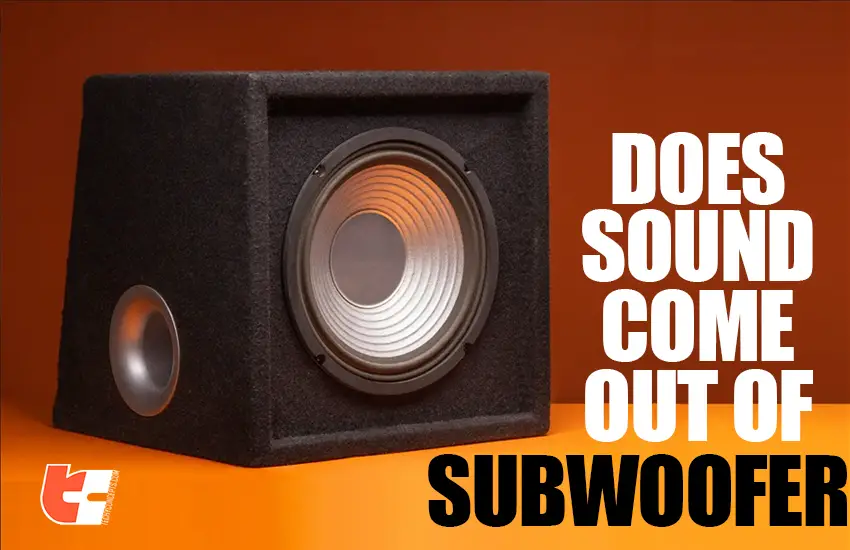
What Exactly is a Subwoofer?
A subwoofer is one of the most vital audio devices needed to complete a high-end stereo system.
Picture this: you’re watching your favorite movie. A thrilling action scene pops up and you can literally feel the floor shaking as a massive explosion is displayed on the TV screen. Watching a movie has never felt so realistic – well, all thanks to subwoofers!
What’s this sorcery, you ask? Subwoofeers, basically, can generate sound frequencies between 20 – 200 Hz, which typically two-channel speakers can’t produce on their own. Subwoofers team up with the rest of your audio system and work as one unit, allowing you to never miss any beat.
What is the Main Purpose of a Subwoofer?
The main purpose of a subwoofer is to reproduce low-frequency sounds that typically go unheard when the sound volume is at its peak. A subwoofer particularly enhances the chest-pounding bass tones that are necessary for enjoying an immersive audio experience.
If you have good-quality speakers in your home theater system, they will be able to handle a wide range of frequencies, but nonetheless subwoofers are especially designed to focus on the lowest end of the audio spectrum, like below 120Hz.
How Does A Subwoofer Work?
In a subwoofer speaker, big drivers known as woofers are featured that create those rumbling deep bass notes. They are typically positioned inside a wooden or plastic casing, for protection which is similar to regular speakers.
Not to mention, some high-end subwoofers may also come with a pre-built internal amplifier. This will further strengthen the audio signals, resulting in richer and cleaner bass tones.
For premium sound quality, make sure there’s adequate compatibility between the subwoofer crossover (when sound moves between different speakers) and phasing – which deals with timing disparities in similar audio signals.
Low-Pass Crossover:
When your speakers start to drop lower in frequency response, and the subwoofer starts to reproduce bass notes – that’s the frequency point we refer to as “low-pass crossover”.
Bear in mind – subwoofers will give their best only if you set the sub crossover to 10 Hz or higher, at least more than your speaker’s lowest frequency range.
0/180 Degree Phase Switch:
If the subwoofers move back and forth while in sync mode, it’s likely that the bass will cancel out if they are out of phase. If that happens, you can use the 0°/180° phase switch to “dial-in” your subwoofer and bring out the best from it.
Typical Design of a Subwoofer
If you own one, you already know what a subwoofer looks like. But for those who don’t own one yet:
Subwoofers are composed of multiple essential components that work together to generate top-notch audio. The list of such components include – a substantial driver (typically measuring 8 inches in diameter or more), a housing case to shield the driver, and also an amplifier to strengthen the weak signals into louder and powerful ones
What’s the driver there for? Well, the electrical signals have to be converted to sound waves with added tangible vibrations. The driver functions at the core of the subwoofer and makes it happen.
What Are the Main Types of Subwoofers?
Before you begin shopping for a subwoofer, you should be well-versed on its different types and styles – such as passive and active subwoofers. The key difference is that passive subwoofers require an external amplifier to power them up, whereas an active subwoofer will include a built-in amplifier and simply plugging it into any power outlet will do.
Well, not just passive and active, there are several more kinds available in the market:
Ported Subwoofers: As you can guess from its name, this type includes little openings and holes for better ventilation so that air can escape. These subs produce rich and thick audio quality.
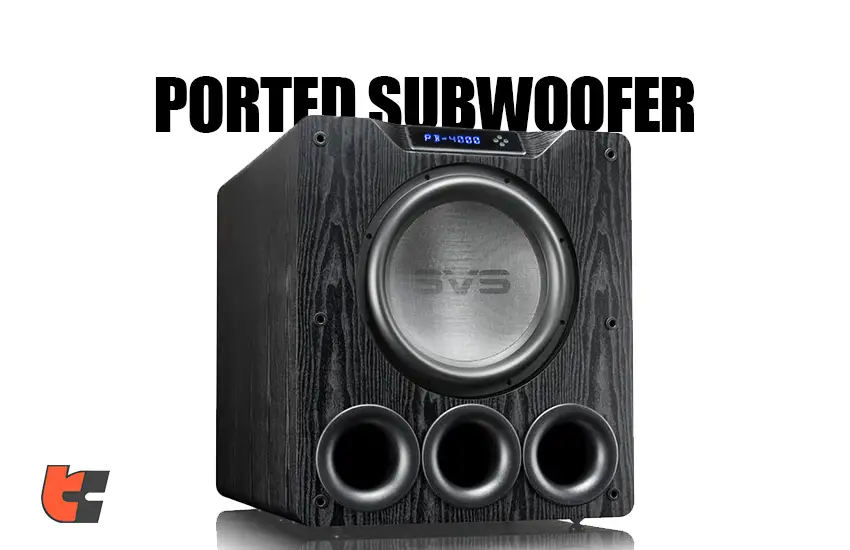
Sealed Cabinet: This subwoofer includes a well-tight sealed cabinet with no ports whatsoever. This allows it to create well-rounded sounds with minimal booms.
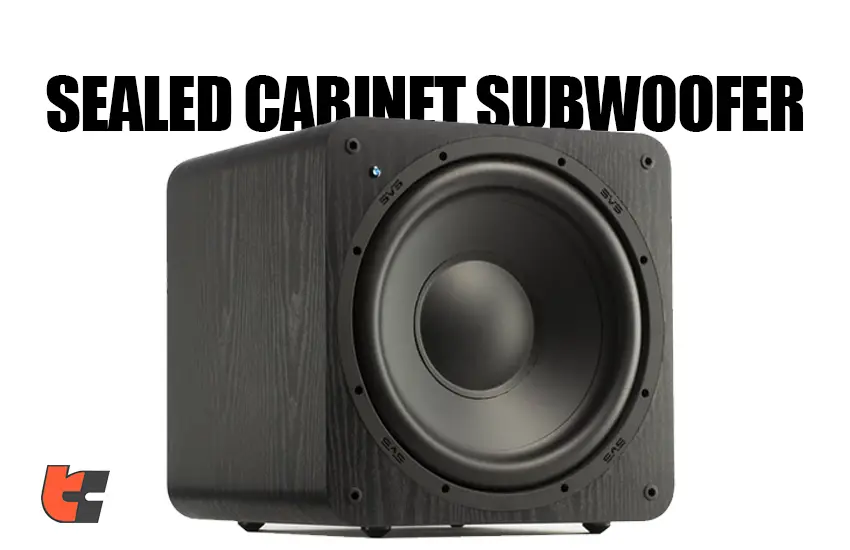
Passive Radiator: Instead of having ports, there are passive radiators to improve sound coverage. This feature is more common in Bluetooth compatible subwoofers.
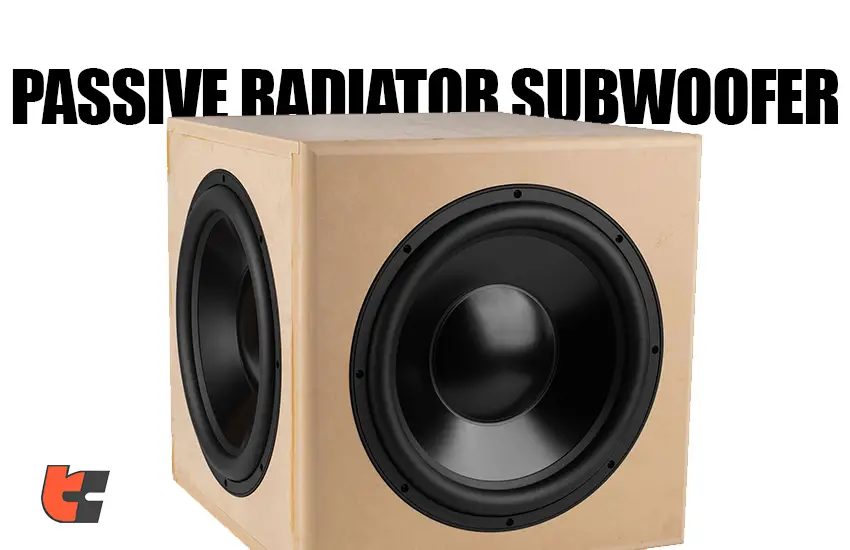
Front/Down Firing: Front-firing subwoofers work great with speakers pointing forward, so that sound waves are generated from the front and two sides. Down-firing subwoofers, however, churn sound from the bottom of the speaker and ripple outward.
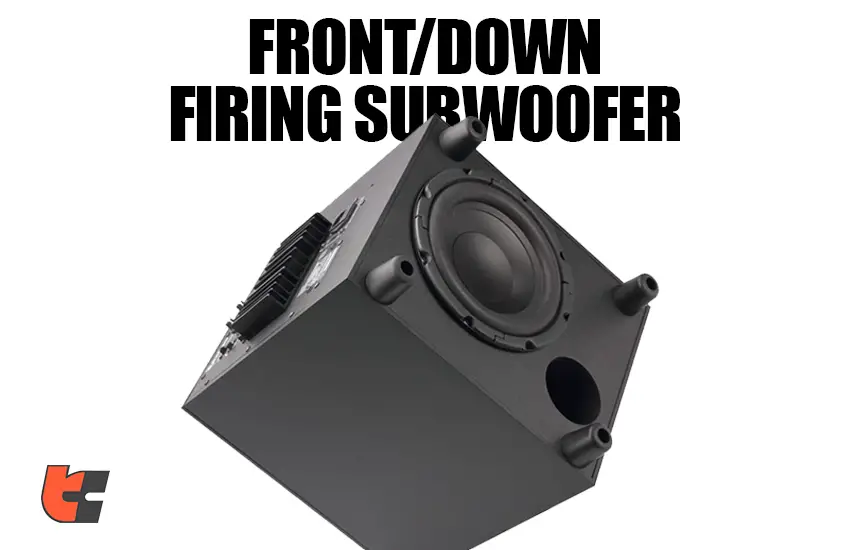
Bandpass: Bandpass subwoofers have two designated chambers – in one of them there is a port for air and radiation to release outside from the front cone and the other chamber for connection making purposes and adjusting bass levels.
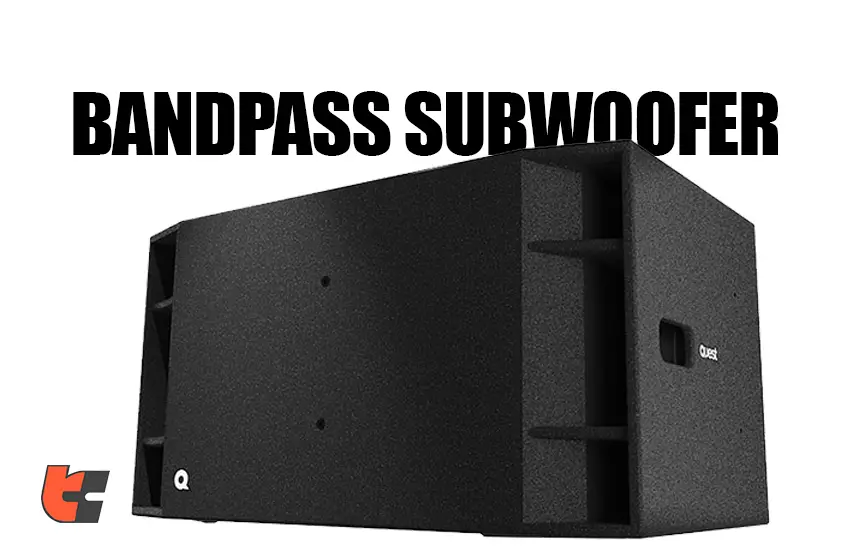
Horn Loaded: Such a subwoofer is generally paired with longhorn speakers as it utilizes the leaking sounds and disperse them from all directions, producing some of the loudest sounds possible.
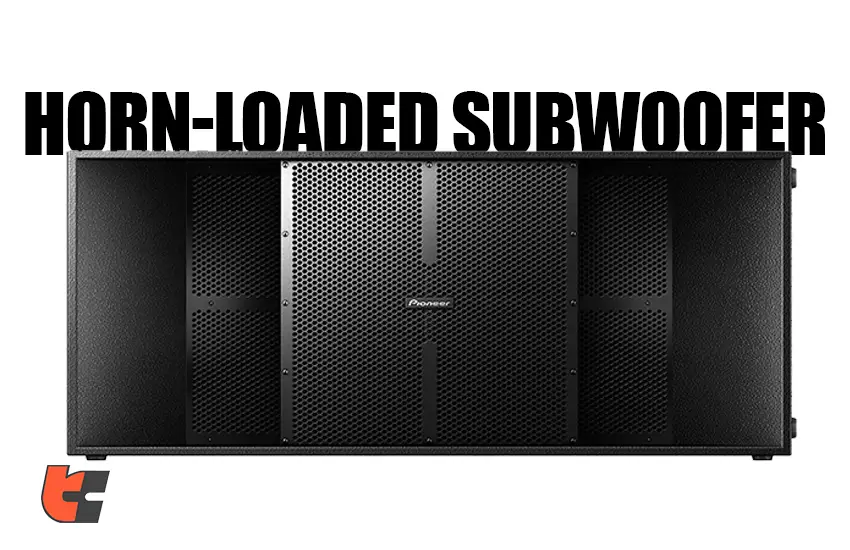
Does Sound Come Out of a Subwoofer?
Yes absolutely! Subwoofer doesn’t only create bass but generates sounds as well. Subwoofers are like specialized speakers that can create low-frequency sounds in the form of deep bass tones.
Apart from low-pitched sounds and vibrations that add depth and meaning to the audio dynamics, a subwoofer can also make some mid-range frequencies. After all, its main job is to improve the audio experience by delivering clean hard-bitting bass that traditional speakers may not be able to create accurately.
To be able to figure out how sound is produced by a subwoofer, let’s understand the basic physics behind sound waves.
Sound equals to vibrations that move through a medium, such as air, so that it can be heard by us. In a subwoofer, a large driver swiftly moves due to electrical signals, pushing and pulling air to create low-frequency sounds.
These sound waves need to be heard more clearly which is challenging due to its longer wavelengths. Yet, because of a subwoofer, we can feel the bass physically which levels up our audio experience. When connected and set up properly, the subwoofer’s output harmonizes with the speakers and amplifiers, resulting in a rich sonic experience.
Final Thoughts
In this article, we attempted to address all your possible queries that you may have when hunting for a subwoofer for the first time and setting it up in your home stereo system. Hope you’re no longer confused. See you soon, mate!
Frequently Asked Questions:
1. Can I use a subwoofer as a speaker?
Answer: Although subwoofers are typically designed to reproduce low-frequency sounds, they can also technically be used as speakers to play higher-frequency tones as well. But, here’s the catch – subwoofers do not win here when competing with dedicated full-range speakers. We recommend using a separate speaker system for delivering mid-range and high-frequency sounds and using subwoofers specifically for profound bass.
2. Do subwoofers make music louder?
Answer: Well, it’s true that subwoofers improve the lower frequencies in your music, particularly the deep bass notes. Although they do technically have some influence on the overall perception of audio volume being “louder”, they don’t directly increase the overall volume of the music or auto adjust the volume in any way. If you intend to increase the volume, don’t rely on your subwoofer for a miracle, do it manually with a remote on the speakers.
3. Is a subwoofer only for bass?
Answer: We wouldn’t say only, although the primary function of subwoofers is to generate low bass frequencies and low-pitch sounds and handle the deep bass notes in movies and songs. Subwoofers may also have some influence over mid-range or high-frequency sounds, but the devices are not particularly designed to achieve this.
4. What is the purpose of a subwoofer?
Answer: The main purpose of a subwoofer is to give life to low-frequency sounds, such as bass. Subwoofers add depth and a sense of realism and thrill to the overall audio quality by producing deep and powerful bass notes in rock music, action movies and adventurous video games.
5. Where should you place the subwoofer?
Answer: It really depends on your room dynamics and how/where the other components of your stereo system are placed nearby. The best spot for placing a subwoofer is next to the speakers and amplifiers, or to the side of your TV or PC. It should be directed towards the front of the room and not in a far corner. The best advice we can give you is to imagine yourself as a scientist and experiment with the locations to determine from where it can provide the best bass response and can be heard clearly.
